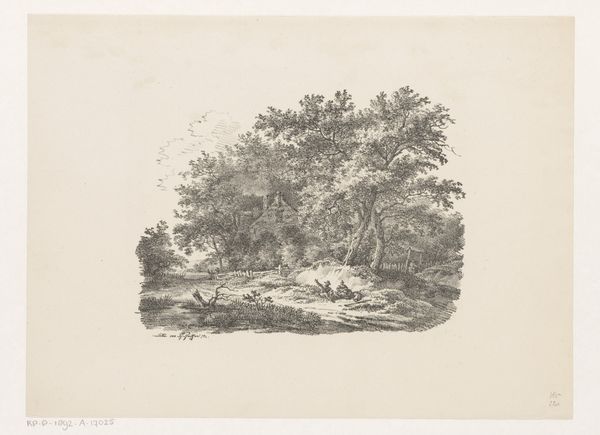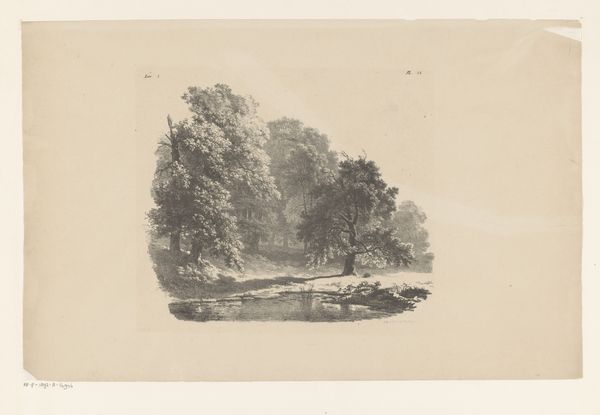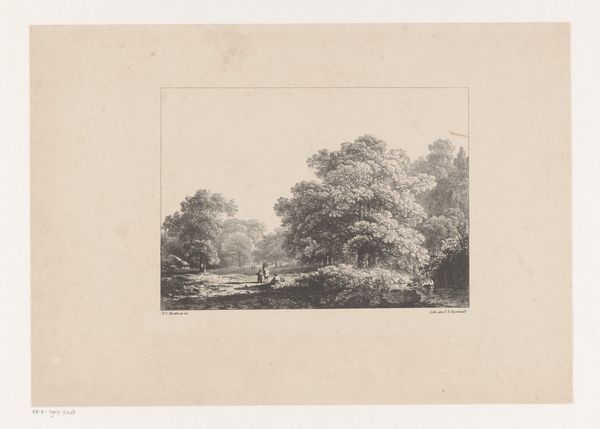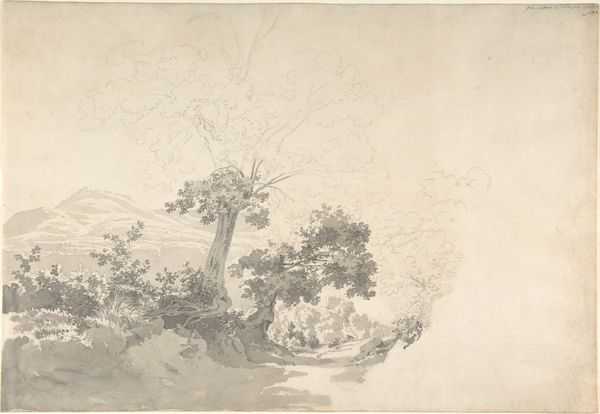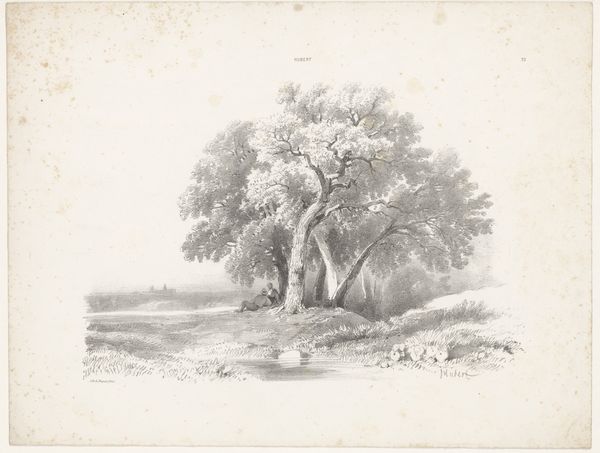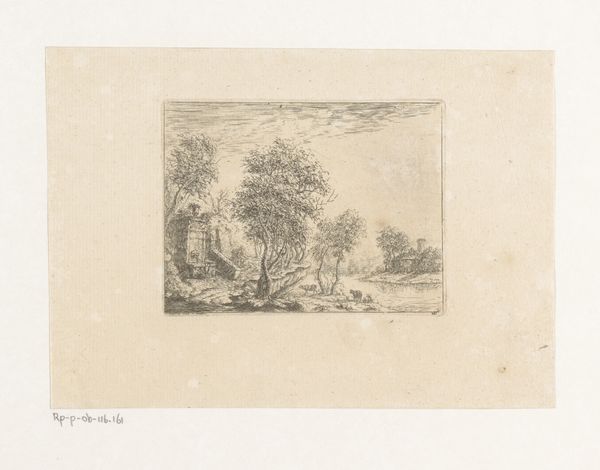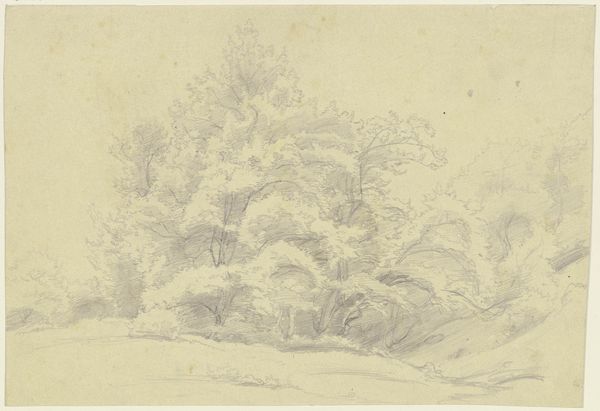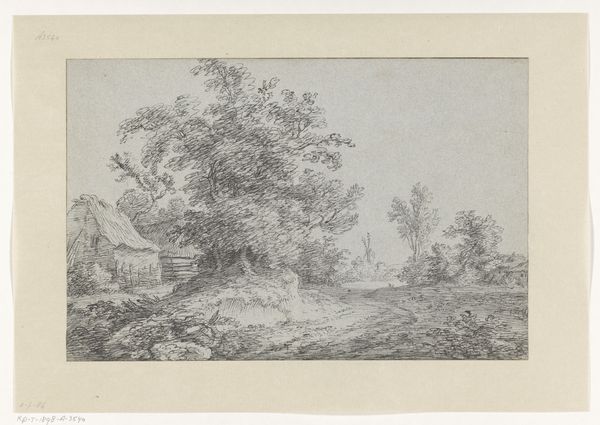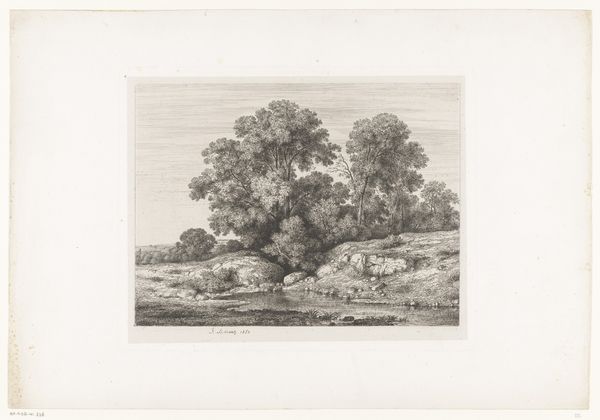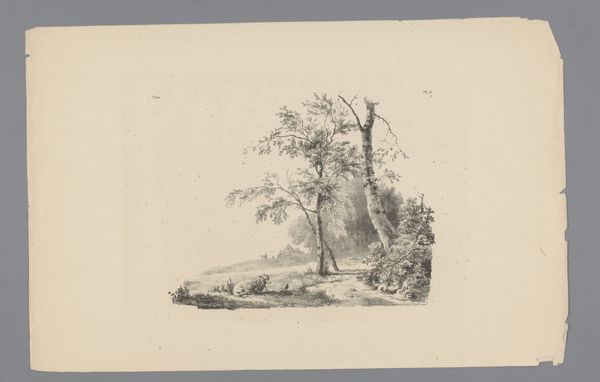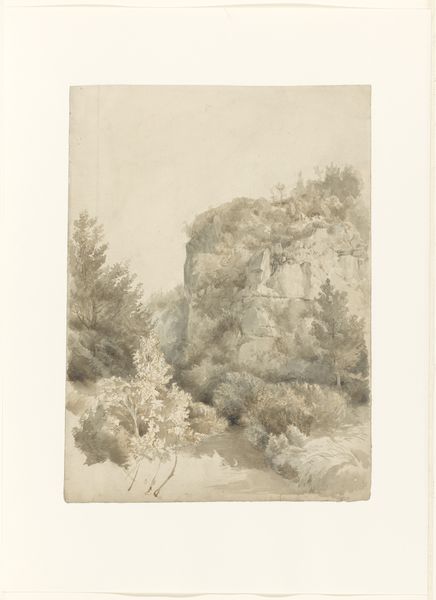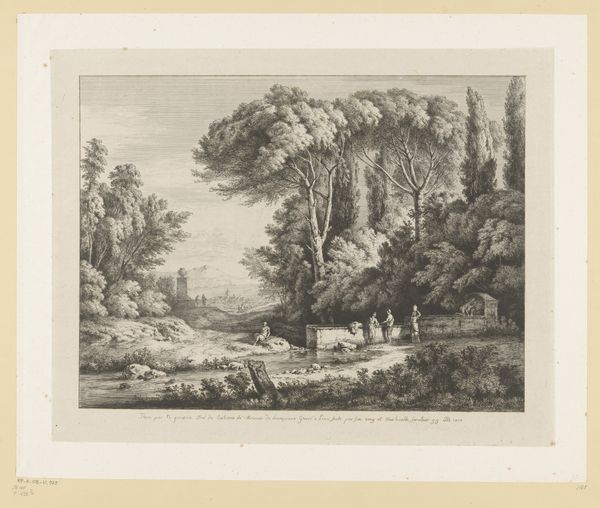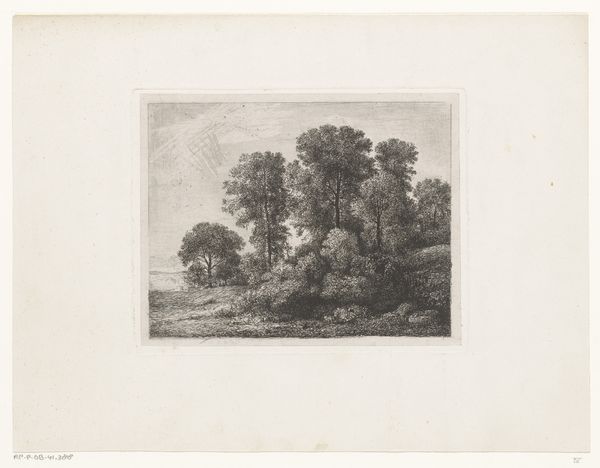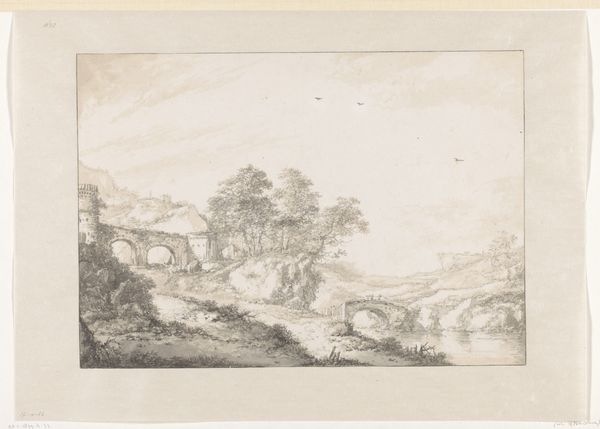
drawing, graphite
#
drawing
#
landscape
#
graphite
#
realism
Dimensions: height 284 mm, width 399 mm
Copyright: Rijks Museum: Open Domain
Editor: Here we have "Heuvellandschap met huis tussen de bomen," or "Hillside Landscape with a House Among the Trees," a graphite drawing by Jean Baptiste Louis Hubert, dating from around 1829 to 1852. The scene has an interesting stillness to it, a very quiet feel, even with all the detail in the trees. How do you see this piece? Curator: Indeed. Note how Hubert has meticulously rendered the trees using graphite. The density of marks and variations in pressure create a complex textural surface that mimics the roughness and organic forms of the foliage. Consider how the light falls – not realistically, perhaps, but as a tool to emphasize form. Do you notice the relationship between the foreground and background and how it's constructed? Editor: Yes, the way the house is almost nestled *into* the hillside with the trees looming above... it's like they are pressing the house into the landscape. Curator: Precisely. Observe the geometry inherent in the architecture of the house juxtaposed against the wilder organic shapes of the trees. This juxtaposition isn't simply representational. It structures our perception, creating a tension between the man-made and the natural world. This kind of formalism asks us to think about how the *artist's* decisions about lines and shapes affects what we *feel.* Editor: That's fascinating. I was so focused on the "realism" tag, I didn't even think about how shapes structure my understanding. Curator: These apparent contradictions - Realism rendered unreal, a home pressed to disappear into nature - challenge us to analyze the artistic choices underpinning our immediate impression of it. What seemed simple yields surprising intricacies. Editor: Thank you. I see that looking closer at technique changes what I considered ‘stillness’ into something dynamic, not just ‘realistic’ in depiction, but also really evocative in form.
Comments
No comments
Be the first to comment and join the conversation on the ultimate creative platform.
